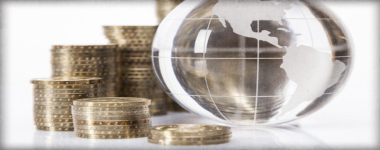Addison Wiggin, Daily Reckoning
“The government is very good at making things overly complicated for the purpose of obscuring what’s really going on from the public,” observed hedge fund manager Erik Townsend during our interview in May.
He was making a point about the 2008 bailouts. The Federal Reserve played a leading role, applying trillions in paper-clip and rubber-band solutions. The Fed’s balance sheet swelled from $900 billion in September 2008 to $4.4 trillion as we go to press.

Â
Luckily for you, our friend Jim Rickards is just as good at elucidating the muddled world of finance as the government is at obscuring them.
Boiled down to its essence, the SDR is a kind of super money printed by the IMF…
“Since Federal Reserve resources were barely able to prevent complete collapse in 2008,” Jim writes in his recent New York Times best-seller, The Death of Money, “it should be expected that an even larger collapse will overwhelm the Fed’s balance sheet.”
Simply put, next time, printing another $3 trillion-plus won’t be politically feasible.
“The specter of the sovereign debt crisis suggests the urgency for new liquidity sources, bigger than those that central banks can provide, the next time a liquidity crisis strikes. The logic leads quickly from one world to one bank to one currency for the planet.”
Leading the way, says Rickards, will be the International Monetary Fund.
“The task of re-liquefying the world will fall to the IMF because the IMF will have the only clean balance sheet left among official institutions. The IMF will rise to the occasion with a towering issuance of SDRs, and this monetary operation will effectively end the dollar’s role as the leading reserve currency.”
Ah… the SDR. That’s shorthand for “special drawing rights.“
The name is cryptic. The mechanism will prove far more inscrutable than the Fed’s alphabet-soup bailout programs in 2008. But the objective will be the same… to print money in the interest of keeping a rotten system functioning.
Boiled down to its essence, the SDR is a kind of super money printed by the IMF and then circulated among central banks and governments. Indeed, the IMF has issued SDRs three times since their creation more than 40 years ago. Each time was linked to a crisis of confidence in the U.S. dollar…
1969: The French and others recognized the United States was printing too many dollars. At the time, foreigners could still exchange dollars for gold, and there was a run on Fort Knox. The IMF created the SDR to smooth the rough monetary seas, issuing 9.3 billion SDRs through 1972.

